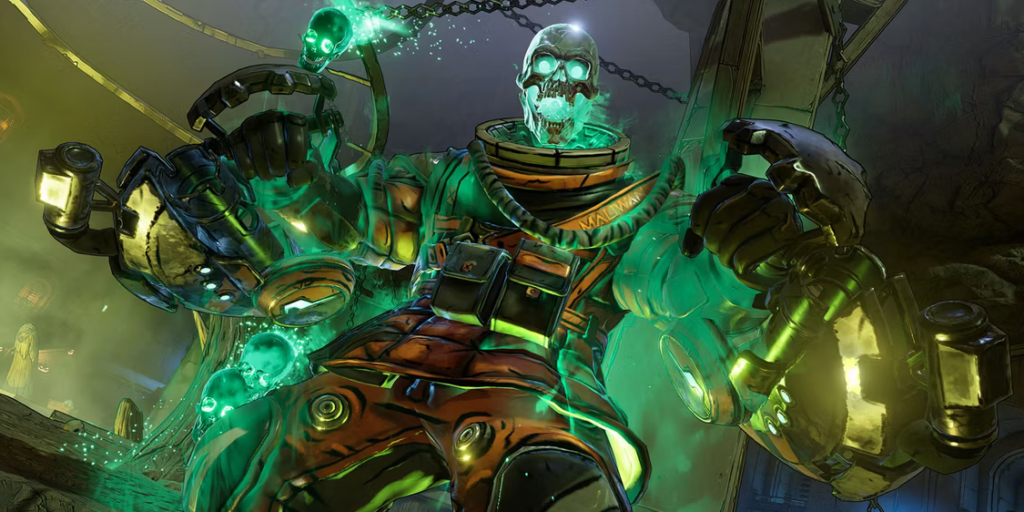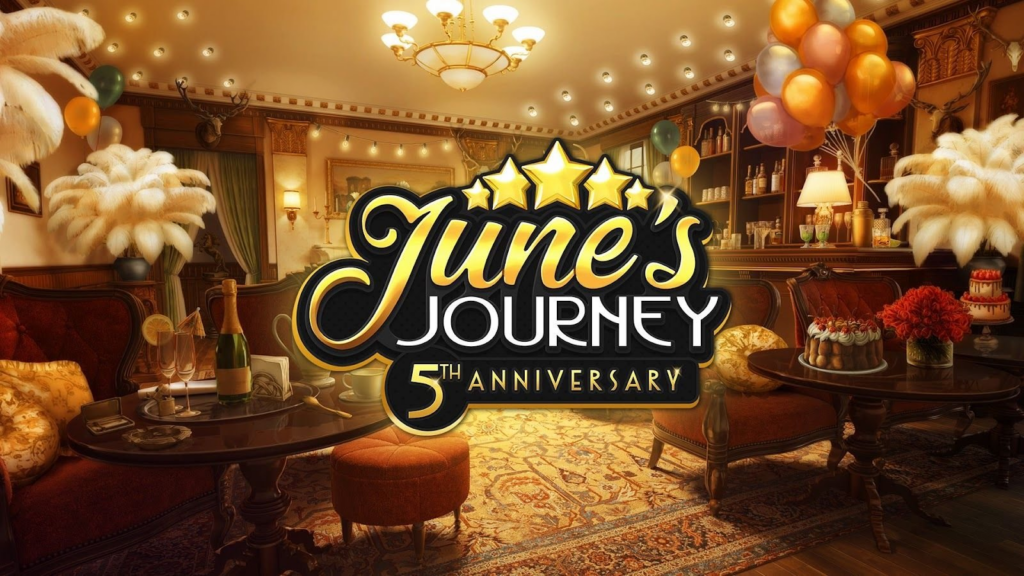
Candy Crush Saga (CCS) has been dominating the charts for almost 10 consecutive years — a remarkable feat in the hotly contested casual puzzle space. This unyielding supremacy is thanks to many factors, but the influence of first-mover advantage, immense brand power, and deep institutional knowledge are unique to King’s most successful match-3 game.
Challengers have come and gone, bringing innovation and threatening to depose King’s evergreen title, and yet still “Candy Crush” sits upon the match-3 throne. This essay explores how King has capitalized on the potential of its most successful title to bring in over $7.15B in its decade of dominance.
Before we analyze its success, let’s have a quick look at its origin story.
Brief Game History
CCS’ DNA is a splicing together of the match-3 gameplay popularized by Bejeweled and the “saga map” from King’s own Bubble Witch Saga, combining snackable puzzles with a light meta design to create an ingenious monster.


As Niek Tuerlings states in our Royal Match deconstruction, King also innovated on Bejeweled with varied game boards, level modifiers, and, most notably, power-up combinations. He says, “These powerful, animated amalgamations were so gratifying and did such a terrific job at making the player feel smart that they lifted the entire spectrum of puzzle possibilities to another level.”
CCS originally launched on Facebook in April 2012 with 65 levels - a laughable number, considering it now has over 13,000. Building on the premier social network at the time enabled King to easily incorporate simple social mechanics, leading to “friend”-based competition and cooperation, and viral growth.
This combination of a rich casual core, simple meta, wide content space, and social virality caused an explosion in popularity, further fueled by a mobile release with synced progression later in 2013. As King President Tjodolf Sommestad said in a recent interview, “Our innovation with cross platform at that time really helped the growth on mobile fueling the growth in Facebook, and the growth on Facebook fueling growth on mobile.”
At the time, King expected CCS to fizzle out within six months. Discussing this, ex-head of the experimentation group at King, David Nelson, mentioned, “People assumed these games would die. No one had a model that showed Candy Crush bigger in any year, ever.”
But the game’s continued popularity and profitability — thanks to a pioneering monetization scheme that hinged on charging $1 for 5 extra moves post-failure — led to a reassessment of its minimal post-launch resources. The growing team learned how to do live-ops, built a gargantuan brand, and has kept CCS on a remarkable growth trajectory ever since.
Just how high has the line gone up? Let’s take a look.
High-level Numbers Overview
How about we start with some ridiculously big numbers to set the scene.
According to data.ai, over its lifetime, CCS has been downloaded 1.65B times, while King’s President pegs total downloads at 3B. Whichever is correct, that means roughly 1 or 2 in every 5 humans on the planet has installed it.
Since launch, CCS has pulled in $7.15B in revenue - well over a third of China’s entire 2022 GDP. It has been played an estimated 4.77T minutes in total, which shakes out to over 9M years of nonstop play. If one person crushed all that candy, they’d leave a trail stretching all the way back to the Miocene era.
In the last 10 years, King hasn’t been able to replicate its own success, despite launching a number of other noteworthy puzzle games, including several others in the Candy Crush franchise. Note: this graph doesn’t even include shelved titles Candy Crush Cubes (King’s attempt at Toon-Blast-style gameplay) and Candy Crush Tales (a Homescapes-like title).

Clearly, there’s something special about CCS that’s challenging to replicate, even with all the inside info and expertise King possesses.
Looking more broadly at the highest grossing match-based puzzle games released by competitors worldwide in the last 10 years, we can see that CCS comfortably reigns supreme.

Playrix’s Gardenscapes briefly posed a threat in late 2019 but has since receded into the middle of the pack. Meanwhile, CCS’ rev line soars ever higher, recently returning to performance heights not seen in almost a decade, bringing in over $100M in November 2022 alone. Royal Match might yet give CCS a run for its money, but we’ll see if it still has legs in 3 years’ time.
Finally, and just for interest’s sake, this graph compares some of the most iconic mobile titles that were released in the same year.

2012 was big for mobile gaming, with plenty of high-profile releases that defined the era. Developers were cutting their teeth on F2P, frantically figuring out how to structure a game in order to keep players engaged and spending, and how to execute successful live-ops. A handful of the big titles released that year are still going strong, but none has performed so well for quite so long as CCS.
All this helps to explain why Phil Spencer recently indicated that Microsoft’s acquisition of Activision Blizzard (AB) is more about its subsidiary King and mobile gaming than anything else. This is unsurprising when you consider that CCS alone makes more moolah than the entirety of AB’s output combined. Since AB’s Q3 financials showed King’s YoY net bookings rose by 8%, largely attributed to the Candy Crush IP — of which CCS is the strongest performer — it’s not too far of a stretch to say that MS is buying AB for CCS.
So how has a dinky little 10-year-old casual puzzle game played by your mum become more important than Call of Duty?
5 Factors That Set Candy Crush Saga Apart
CCS is an undeniably excellent casual mobile game. It has satisfying core gameplay that’s easily consumed in short sessions, juicy feedback that really hits the sweet spot, a broadly appealing theme and aesthetic, a finely crafted difficulty curve, and new content drops every week. But you could say the same for plenty of other match-3 titles, and yet none of them can really compete. What is it that makes CCS so special?
We believe it’s down to the following 5 factors:
- First Mover Advantage
- Brand Power & Marketing
- Deep Institutional Knowledge & Resources
- Willingness to Adapt
- Doubling Down on Social Gameplay
Let’s dig into each.
#1 - First Mover Advantage
When CCS released in October 2012, it was one of the first F2P match-3 games on mobile, and it was certainly the first that really capitalized on the immense potential of the subgenre. A handful of others came out at around the same time — most notably Bejeweled Blitz from EA in November 2011, almost a year before CCS shipped — but none of them performed anywhere near as well.

Critically, none of them had that magical “saga map” metagame that creates a tangible sense of incremental advancement and enables players to formulate mid- and long-term progression goals. What’s more, having your friends shown on the saga map creates that powerful social comparison and competition compulsion that drives spend and keeps players coming back.

With those distinct meta and social fundamentals in place, when CCS expanded from Facebook to mobile, it was set to blow. By the time its next real competitor emerged (King’s own Farm Heroes Saga) in January 2014, CCS was getting ~30M installs and making ~$100M per month.
This early, innovative success enabled King to create a mammoth brand, secure the loyalty of a huge playerbase, and get a headstart on the competition in terms of all the different tools, processes, and types of knowledge required to operate this kind of game. Every contender since has had to cross a yawning competitive moat in order to get some semblance of a chance.
It’s important to recognize that not even King’s other match-3 games — Farm Heroes Saga, Candy Crush Soda Saga, Candy Crush Friends Saga — have been able to perform as well as CCS, despite having access to the same institutional knowledge and resources, and despite being able to build on learnings taken from CCS. Did King make the “perfect” match-3 game with CCS, or did being first help to give it an unbeatable lead? We believe the latter.
Another factor that makes CCS so difficult to catch is its brand.
#2 - Brand Power & Marketing
CCS has incredible brand power. Everyone knows what “Candy Crush” is, in the same way that they know who you mean when you mention “Trump” or what you mean when you point and yell “Ferrari!” It’s a household name, and you can’t say the same of something like Royal Match, even though it’s enormously successful. It’s hard to beat the default, especially when it comes to growing your playerbase.
CCS isn’t just a huge brand within match-3. Because it was one of the first mobile games to capture mainstream attention, King’s reigning champ is arguably synonymous with mobile gaming itself, just as Google means search. For a sizeable percentage of the people on the planet, CCS would have been the first game they ever played (whether they described themselves as “gamers” or not). And if CCS has been downloaded 1.65B (or 3B, depending who you ask) times, imagine how many people have at least heard of it. To many of these people, CCS is mobile gaming.
We would go even further and say that “Candy Crush” means relaxing and passing time on your phone, thanks in part to cheeky British parliamentarians. This is a message that King’s President echoes of the brand: “What is quite unique about it is that the players do talk about that moment of relaxation that we're going after. [For] some of them it's almost meditation or a nice treat they have on the day, to get that moment with Candy Crush.” This association with relaxing is further reinforced by messaging within the game.

“lobal brand recognition and penetration into the average person’s world is something King and the CCS team have very actively fostered. General Manager for Candy Crush Saga, Todd Green, says, "If we talk about Candy, I think it's one of the very few games that maybe has the possibility to expand beyond the boundaries of the app. The game, the visuals, the name even, they're so recognizable, that one thing that I hope we can do is to have Candy be a part of popular culture, not only inside but also outside of games. And one way for us to express that idea is to partner with people who are outside the games industry."
CCS has run a huge number of licensed tie-ins to keep new audiences coming in as well as to retain existing players. These partnerships include Meghan Trainor launching her new music video inside the game, Blackpink promoting a new AR feature, a tournament hosted by Khloe Kardashian and co-promoted by Doja Cat, Marie Claire collaborating on a level design, quite a few movie cross-promotions, and Mario Lopez hosting a Candy Crush Game Show.
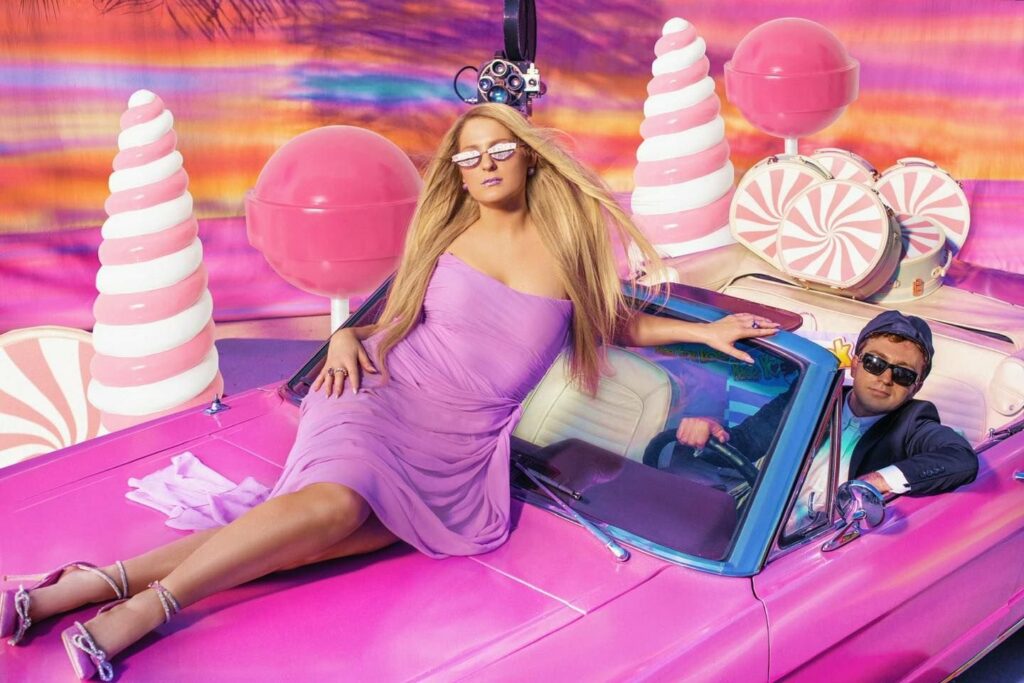
The resulting brand awareness has likely been a significant contributor to the fact that, when the competition was fading in a post-IDFA and post-pandemic world, CCS has still managed to keep acquiring players at a healthy rate.

It’s also interesting to note that, unlike the competition and the vast majority of mobile game UA efforts, CCS shows a commitment to representative advertising. It has gone on record in the past stating that this was to do with building the brand long-term, and showcasing fake gameplay would harm that.

#3 - Deep Institutional Knowledge & Resources
In building a megahit game, thousands of macro- and micro-level decisions are made that collectively define how the game looks, feels, and behaves, as well as how it’s marketed, operated, and produced, all of which ultimately contribute to its huge success. In order to make the right decisions, experience is needed. The King team has it in spades.
Its expertise in building casual puzzle games has come from decades of effort, going back to Midasplayer.com and later King.com — a web portal that operated from 2003 onwards (and only recently shut down). King developed hundreds of titles for its web portal, including a match-3 called Midas Miner Speed that bore a striking resemblance to Bejeweled, which King later polished up into Candy Crush by adding more fluid animations and cute characters, and which later developed into Candy Crush Saga.

Could King have made CCS without building casual games for almost ten years beforehand? Would it have been able to rapidly jump into the world of Facebook and social gaming without having an archive of pre-made games to draw on? Could it have arrived at the masterful conglomeration of aesthetics, gameplay, content, and features that is CCS without taking the countless baby steps that led up to it? Almost certainly not.
All that time spent developing and iterating has been fortified further in the decade since CCS launched, and within King now resides an invaluable body of institutional knowledge spanning every discipline, from design to production, product management, art, engineering, marketing, QA, UA, and everything in-between. It’s now in a position where it has the expertise, the technology, and the processes that result from building a hit game for a very long time and will likely enable it to keep winning for years to come and fending off competitors as they go.
One of the most prominent disciplines it’s honed is analytics-driven decision-making. Operating a web portal and having hundreds of shots on goal gave King the opportunity to build its analysis muscles, meaning it could flex hard when CCS launched. According to David Nelson, “Already in 2013, King was already incredibly strong analytically - very strong on looking at outcomes and learning from them and trying to figure out what people actually liked, on delivering content and figuring out what is it that people are looking for and how can we give them more of it?”
Nelson goes on to say, “A lot of people I think don’t realize the level of detail, and how good you can get at being strong operationally on UA, and making sure that you’re not overspending, you’re spending on the right people, and it’s structured.”
This analytical and methodical approach — shared to an extent by Zynga, but perhaps less pedantically and obsessively applied at King — has enabled it to deliver gameplay experiences while ensuring they also raise the bottom line. How do you operate a leaderboard and ensure it increases LTV without causing churn? This is not a simple problem to solve. The data-driven decision-making mindset also extends to the art and audience appeal testing processes, which, according to an ex-King employee, are super-solid, especially relative to smaller companies.
Of course, all this development and analysis effort is facilitated by an incredible depth of resources, which means it can outspend the competition on UA, marketing, hiring, research efforts, etc. It’s hard to beat the king when he’s already sitting on the throne and has the royal coffers to dip into…
Even longevity itself is a resource of sorts. The fact that CCS has been in active development for so long means it has a huge volume of content and mechanics in the repository, and a plethora of systems, features, and competition types lying around. All this material is ready to be reheated and repurposed in order to keep the game fresh. Meanwhile, relative newcomers like Royal Match have to build all this software and gameplay from the ground-up.
It’s not just depth of experience within CCS that King draws upon, but the breadth of the Candy Crush franchise itself. The other titles in the IP give King fertile ground to test more radical ideas, mechanics, and features, the best of which it could then implement into the golden goose.

In short, King has a long history of casual puzzle game experience across all disciplines that helps guide what it should and should not do — effectively infinite resources, a massive amount of game that it can lean on, and relatively safe places to run risky experiments on its target audience. That’s a winning combo, and few other companies can boast the same.
#4 - Willingness to Adapt
It’s not uncommon for winning teams to become complacent and perhaps even arrogant (to assume that the way they’re doing things is the best) until they lose their place at the top. Huge games can also become so entrenched in their success that they develop an institutionalized inertia; altering their trajectory is like steering an iceberg. However, based on the changes the CCS team has made — perhaps in response to the competition — that doesn’t appear to be an issue here. Given CCS’ staggering success, it has shown a remarkable agility and willingness to adapt.
Although it’s hard to say for certain why decisions are made without inside knowledge, it appears that CCS has repeatedly taken inspiration from match-3 upstarts and incorporated their best ideas. To be fair, these changes have already been half-validated given their presence in successful competitors, and no doubt King would be doing its own rigorous internal testing before releasing changes into the wild. Through this lens, the willingness to adapt isn’t all that remarkable, since making changes isn’t risky if the data proves otherwise. Nonetheless, a team culture of being open to change and continually striving for higher heights does appear to be in place at King.
One profoundly influential example of this mentality is pushing prices higher. It’s generally understood that ~95% of revenue in match-3 games comes from players purchasing +5 moves after failing a level. As competitors, most notably Royal Match, increased the cost of failure, King has followed suit. At launch, purchasing 10 Gold Bars cost $1, and it’s now $1.99 — exactly the same as Royal Match, and equal highest in the subgenre.
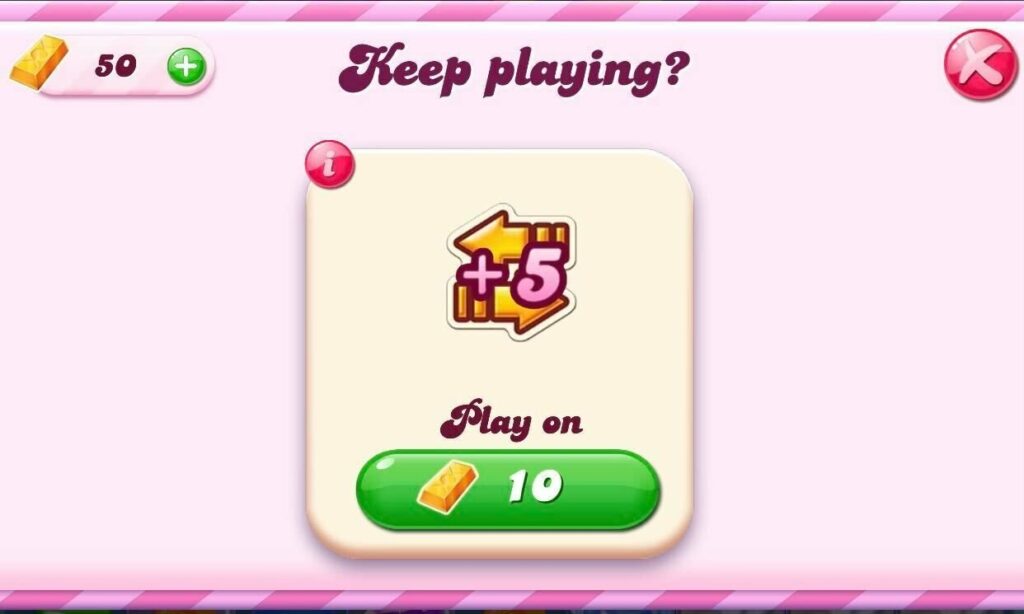
Another “softer” but nonetheless significant example is the pace of play. Compare the speed at which matches resolve and pieces drop in this early gameplay video versus this recent footage. CCS has made everything faster and snappier, and here again it appears to have followed in Royal Match’s footsteps.
King’s move into advertising-based revenue is another example of adaptation, as is its adoption of the season pass model.
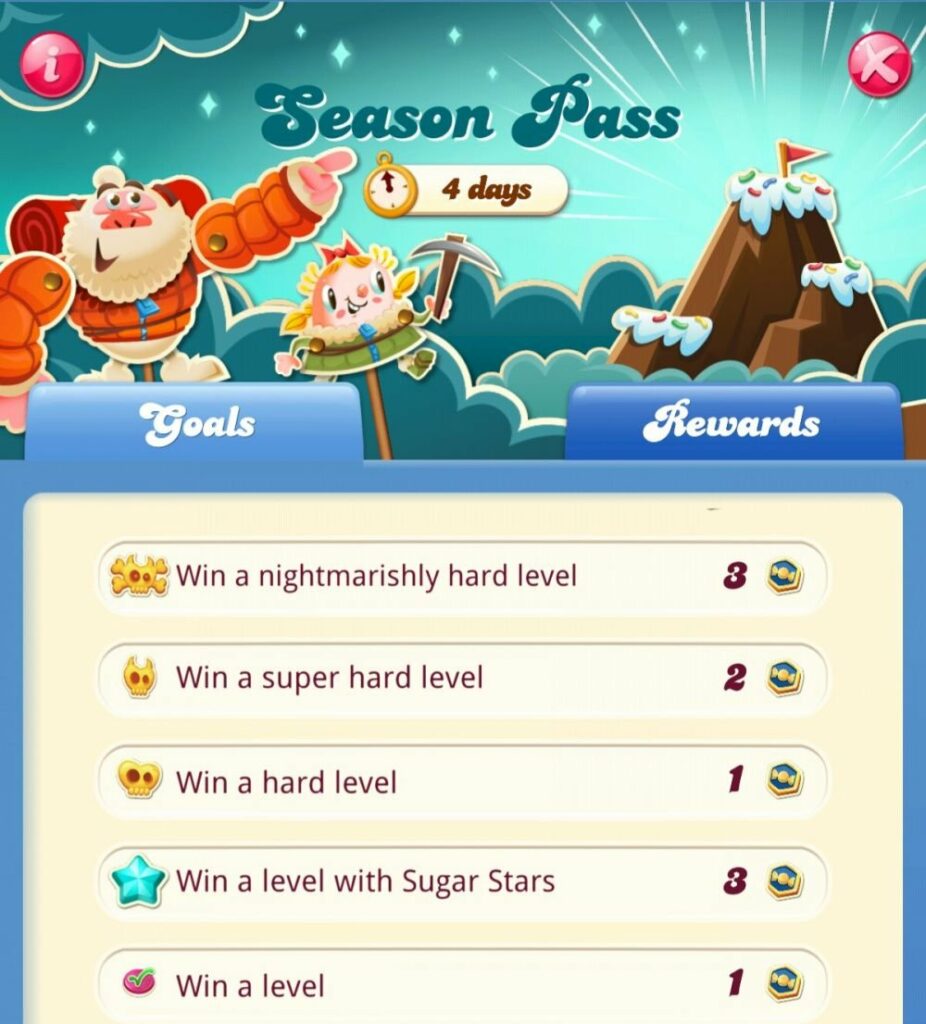
Although CCS’ launch laid the very foundations of social play in match-3, it’s also cribbed numerous ideas from competitors along the way. That brings us to our final distinguishing factor for the game’s success.
#5 - Doubling Down on Social
CCS is the most social match-3 game out there. It kicked off with the saga map friends comparison feature and requesting lives, and it’s seen a significant increase in social mechanics over the years. What used to be somewhat superficial is now much more involved.

Contemporary CCS features many different forms of cooperative and competitive play in 1 vs 1, 1 vs many, and many vs many formats. Investing in PvP is clearly yielding returns, as indicated by Activision Blizzard’s Q3 2022 report: "King continues to introduce more player-versus-player features within Candy Crush, fueling engagement and player investment. Time spent within Candy grew year-over-year for a fifth successive quarter, and Candy Crush was the top-grossing game franchise in the U.S. app stores for the 21st quarter in a row.”
Top CCS players win >1,000 levels per week, so keeping them fed with entirely fresh new content would be impossible. Social play serves as a versatile vehicle and container for recycling the game’s content, satisfying the most hungry of players, keeping them engaged and spending to beat the other hardcore crushers of candy.
This emphasis on social play was pioneered by Peak with Toon Blast, which was an aggressively competitive puzzle game almost out of the gate. Some of the same folks went on to found Dream Games and build Royal Match, and many of the events and features that team has added have focused on expanding the social engine - further validation that CCS’ fixation on social is the smart play.

Candy Crush Saga’s enormous market share causes a network effect. The sheer number of players in the system means that they feed each other, and the value of the social features — and the players interacting with them — is amplified.
Future Speculation
With 10 stellar years in the bag, where might King take CCS next?
In terms of the product itself, we expect the PvP focus to continue (given those notes in the Q3 results, that Kardashian-hosted tournament, and King’s President’s recent comments), the prices to increase as much as the market will tolerate, and the competitor-inspired adaptation to persist as well. Since, anecdotally, CCS is not an easy game to return to as a churned elder player — there are so many mechanics and features that it’s hard to remember what’s what — it might want to consider building an “RTUE” (ReTurning User Experience) that gently re-onboards folks who are coming back into the fold. In terms of Microsoft’s impending ownership of Activision Blizzard, perhaps we’ll see CCS bundled into the Game Pass in a similar way to Riot’s F2P games, giving subscribers candy-crushing benefits. Oh, and they’re going to change the app icon for the first time in 8 years!
On the marketing front, those licensed tie-ins seem to be working for the company, and we imagine it’ll keep outspending the competition and stay committed to build its brand long-term with legit gameplay-based ads and elaborate stunts. Microsoft seems unlikely to bring anything new to the marketing table, since King is already extremely well-resourced, and leadership has generally downplayed MS’ possible influence. Fans of MS’ other IP (Halo, Gears of War, Forza, Starfield) seem unlikely to have much crossover with the CCS audience, but maybe we’ll see a Minecraft, Fable, or Elder Scrolls tie-in…?
When it comes to production, perhaps MS’ acquisition will see some “HR efficiency measures” being taken and excess King staff being culled. We could imagine that the CCS team has built up a fair amount of bloat as the years of success have settled in, but it seems an unlikely target for such cost cutting, given the game’s resounding success. Regarding processes, one thing it might be exploring is use of AI to tune the difficulty of levels, or perhaps even generating levels outright, since level creation is evidently very time-consuming (otherwise it’d turn out more than 45 levels per week).
Whatever the future may hold, given the game’s incredible growth story so far, we could easily believe that King will be celebrating 20 years of continued Candy Crush success when the time comes.
A big thanks to Thomas Baker for writing this essay, and to Harshal Karvande for his expert input! If Naavik can be of help as you build or fund games, please reach out.




